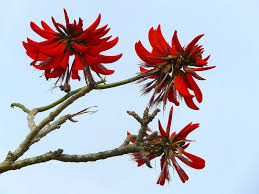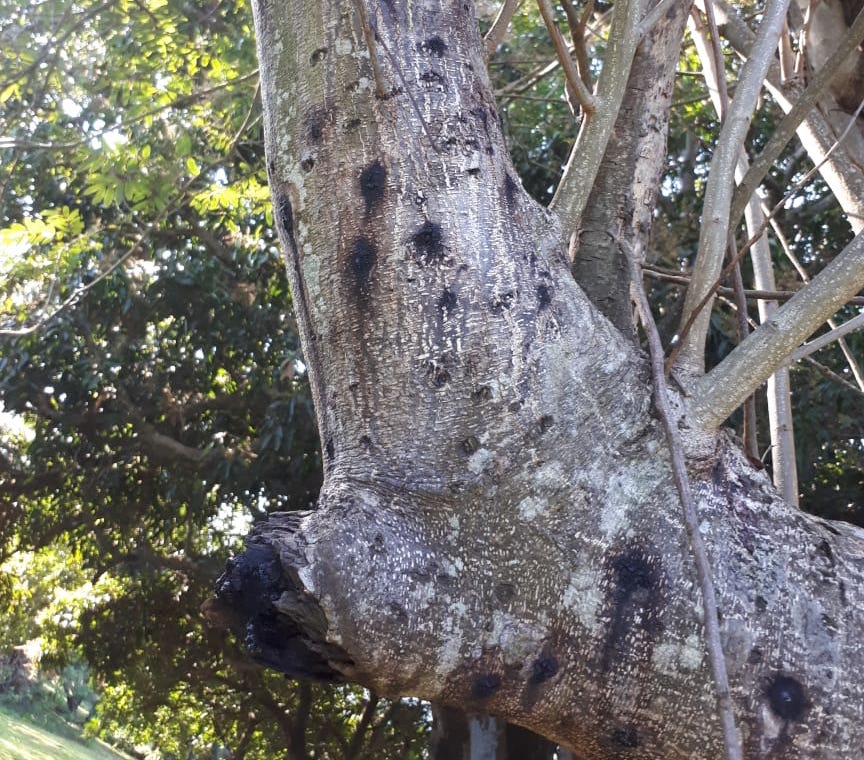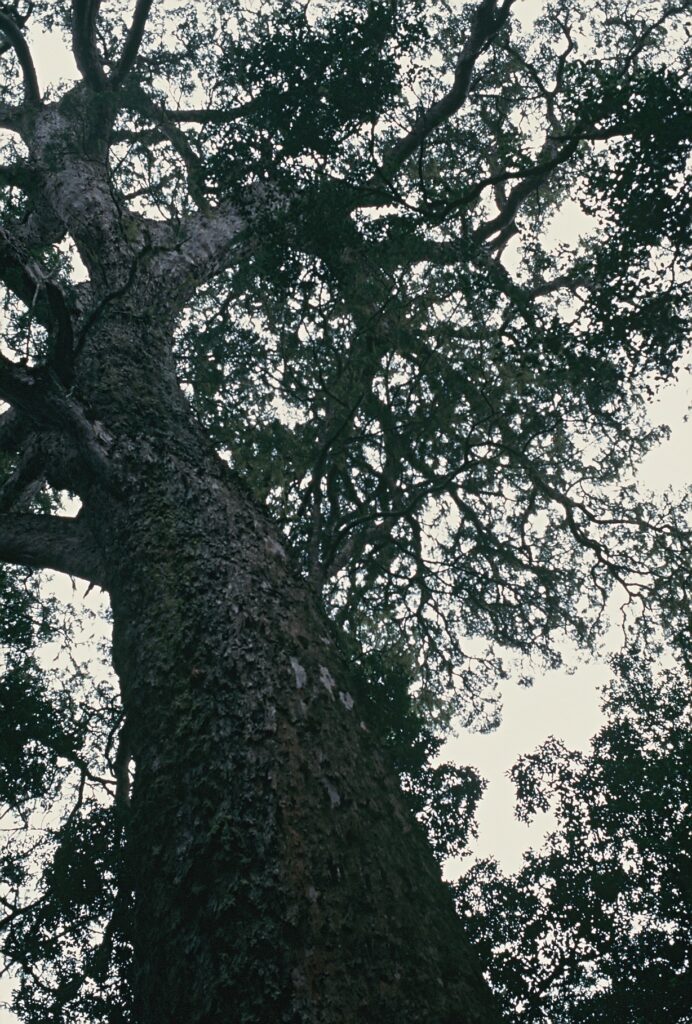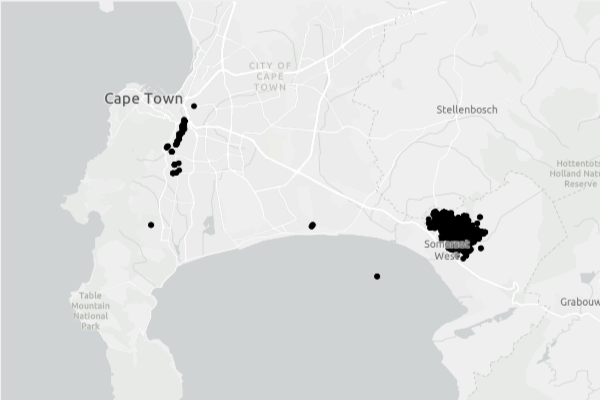One of the pathways is wooden handicrafts – identified as a pathway more than a decade ago but only partially regulated. The other is new: wood used to decorate aquaria. Two new papers demonstrate that both carry multiple and diverse taxa of fungi. At least 30 have never been detected before in the US. They include both plant and human pathogens.
Both sets of authors call on the U.S. Department of Agriculture to remedy ineffective regulations. However, it appears unlikely that APHIS will be able to do so now, when its budget and staff are being cut. (Lawsuits might restore some of these resources.) Extending APHIS’ authority to regulate organisms that are not plant pests would require Congress to adopt new legislation.
Live Pathogens Imported in Wooden Handicrafts
In 2022, Jason Smith and others (full citation at the end of this blog) published an analysis of the viability and diversity of fungi brought to the U.S. in imported wooden handicrafts. They isolated 47 fungal taxa originating from at least seven countries on three continents. All remained viable despite being subjected to various phytosanitary requirements. Fourteen were plant pathogens; 17 were human pathogens; several were producers of mycotoxins. Three taxa have not been reported before in North America: Bipolaris austrostipae, Paecilomyces formosus, and Xylaria badia. All three are plant pathogens. P. formosus is a human pathogen as well.
Three quarters of the taxa have tolerances that would increase their likelihood of surviving standard heat or fumigation treatments.
Smith et al. point out that wood from sources other than China are subject only to general permit requirements outlined here. Only if pests are detected during port inspections are quarantine actions taken.
APHIS has certified more than a thousand Chinese exporters of handicrafts that incorporate wood, straw, or other biological components. APHIS encourages importers to buy products from these businesses. However, importers may choose other sources. In that case, the product must be treated before entry.
However, as Smith et al. point out, regulation and treatments are focused on arthropods. They do not address the risk from disease pathogens. Smith et al. conclude that these regulations are insufficient to protect plants from damage.
A second issue is that USDA has no authority to regulate organisms that pose a risk to non-plant hosts, including humans. This is especially worrying in this case because many of the handicrafts being intended for food preparation and distribution. Others are handled by purchasers during crafting activities, or used in bath and beauty products.
Live Fungi Imported in Decorative Wood for Aquaria
A second study has expanded the types of material raising concern. The Minnesota Invasive Terrestrial Plant and Pests Center sponsored research that confirms that pieces of wood imported to decorate aquatic and terrestrial aquaria support live fungal-like organisms. The scientists worry that the wood – and the organisms it harbors – might be discarded in a way that facilitates escape and establishment of these organisms. Another possible route of escape is if the water from these mini-habitats is dumped into surface waters.
Blanchette, Rajtar, Lochridge and Held (2025; full citation at end of this blog) obtained 44 samples of such wood from on-line sellers. Some samples had evidence of fungal infestation. Many of the wood pieces were extensively degraded, with large holes, some of which held mud or sand.
The scientists isolated 202 cultures representing 123 fungal taxa in the Ascomycota, Basidiomycota, and Mucoromycota. They detected no Oomycota. The organisms included 30 or 31 species that have not previously been reported in the United States. Twenty-one species are potential plant pathogens, 37 species are wood decay fungi. Twenty-four taxa appear to be previously unknown.
The origins of the wood pieces have not been revealed by the sellers. The scientists believe wood might have come from China, Vietnam, Thailand, and possibly other Asian countries.
Blanchette et al. note that many fungal-like pathogens that have caused devastating diseases in North American forests came from Asia, although not all were introduced directly from there. They name as examples chestnut blight, white pine blister rust, Dutch elm disease, Port-Orford cedar root disease, sudden oak death, and laurel wilt. [Brief descriptions of all these diseases can be found here.] These past introductions occurred via transport of soil, timber, wood products, living trees, or other plant material.
Blanchette et al. cite Smith et al. regarding detection of novel fungal pathogens of both plants and people on imported wooden handicrafts. They cite Brasier, Jung, and others for the likely Asian origins of many Phytophthora species (see citations at the end of this blog). They note the risk associated with the many undescribed species found in that region. In agreement with many others, Blanchette et al. suggest that fungal pathogens pose a very high risk for the U.S. due to rapid emergence of new diseases, low resistance in host populations, and limited surveillance infrastructure for detection.
The Blanchette et al. study was prompted by detection of Xylaria apoda growing on wood submerged in aquariums located in two states which are quite far from each other – Minnesota and Colorado. Despite the pieces of wood having been dried, shipped and stored for a long period during the import process, the fungus remained viable and was producing fruiting bodies. In total, they isolated eight species as known pathogens of agricultural crops and trees. They also report other fungi that might have potential to be plant or human pathogens. Blanchette et al. express specific concerns about possible impacts of the saprophytic taxa on ecosystem functions. That is, wood decay communities could be adversely affected by changes to biomass degradation and native wood-inhabiting insects.
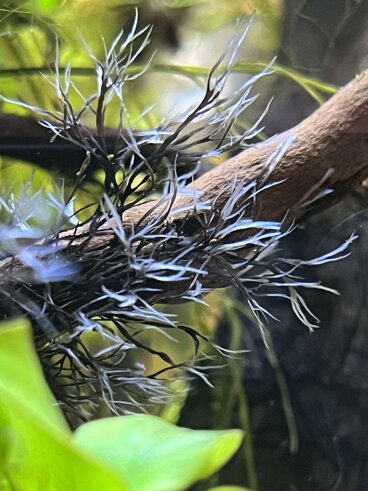
Blanchette et al. point out that their detections came from 44 samples, which represent a very small fraction of the wood being imported for these purposes. Nevertheless the researchers detected impressive quantities and diversity of viable fungi.
Although they did not isolate any Oomycota species, Blanchette et al. say the presence of mud and soil indicates this type of wood could be a pathway for introduction of various exotic Phytophthora – which reside in aquatic and wet soil environments. They call for additional sampling and investigation using more selective methods of isolating Phytophthora species to determine if this could be a successful avenue for importing species of plant pathogenic Oomycota.
Blanchette et al. recommend that people who purchase wood for aquaria repeatedly soak and rinse the wood in water before putting it into an aquarium. This helps eliminate some of the heartwood extractives from the tropical woods and reduces water discoloration in aquariums, as well as possible toxicity to fish and plants. They warn that disposal of the water in contact with this wood into waterways or outdoors could easily release fungal species or Phytophthora spp. that might be in the wood.
Blanchette et al. say their results support earlier indications that current regulations to prevent the importation of non-native fungi on decorative woods used in aquariums are ineffective. In this investigation alone, they cultured more than 100 different live taxa that survived any fumigation or sterilization treatment. They note that scientists have repeatedly called for stronger phytosanitary regulations on imported wood.
One important step they suggest is increasing biosurveillance at the global level. They also suggest prohibiting importation of fungi and fungal-like organisms via this pathway before they become serious problems in their new environment. I concur with these suggestions – with the caveat that while the importation ban is in effect, APHIS and other agencies with authority over invasive species threats to non-plant resources should assess the risks and identify what steps each should take to address them.
[For the history of earlier critiques of weak regulation of imported wood, see blogs on this site under the category “wood packaging” and Fading Forest reports Two and Three (links at the end of this blog). For my critique of regulation of pathogens, see here or contact me.
SOURCES
Blanchette, R.A., Rajtar, N.N., Lochridge, A.G. et al. 2025. Intercontinental movement of exotic fungi on decorative wood used in aquatic and terrestrial aquariums. Scientific Reports 15, 9142. https://doi.org/10.1038/s41598-025-94540-x
Smith, J.A., T. Quesada, G. Alake, N. Anger. 2022. Transcontinental Dispersal of Nonendemic Fungal Pathogens through Wooden Handicraft Imports. mBio July/August 2022 Volume 13 Issue 4 10.1128/mbio.01075-22
Background sources
Brasier, C. M. 2008. The biosecurity threat to the UK & global environment from international trade in plants. Plant Pathol. 57, 792–808.
Brasier, C. M., Vettraino, A. M., Chang, T. T. & Vannini, A. 2010. Phytophthora lateralis discovered in an old growth Chamaecyparis forest in Taiwan. Plant. Pathol. 59, 595–603.
Jung, T., B. Scanu, C.M. Brasier, J. Webber, et al. 2020. A survey in natural forest ecosystems of Vietnam reveals high diversity of both new & described Phytophthora taxa including P. ramorum. Forests 11, 93.
Jung, T., Horta Jung, M.; Webber, J.F. et al. 2021. The destructive tree pathogen Phytophthora ramorum originates from the Laurosilva forests of East Asia. J. Fungi 7, 226.
Jung, T., Milenković I, Balci Y, et al. 2024 Worldwide forest surveys reveal forty-three new spp in Phytophthora major clade 2 with fundamental implications for the evolution & biogeography of the genus & global plant biosecurity. Stud. Mycol. 107, 251-388.
Roy, B. A. et al. 2014. Increasing forest loss worldwide from IAS pests requires new trade regulations. Front. Ecol. Environ. 12, 457–465.
Wingfield, M. J., Brockerhoff, E. G., Wingfield, B. D. & Slippers, B. 2015. Planted forest health: The need for a global strategy. Science 349, 832–836.
Posted by Faith Campbell
We welcome comments that supplement or correct factual information, suggest new approaches, or promote thoughtful consideration. We post comments that disagree with us — but not those we judge to be not civil or inflammatory.
For a detailed discussion of the policies and practices that have allowed these pests to enter and spread – and that do not promote effective restoration strategies – review the Fading Forests report at https://treeimprovement.tennessee.edu/
or


